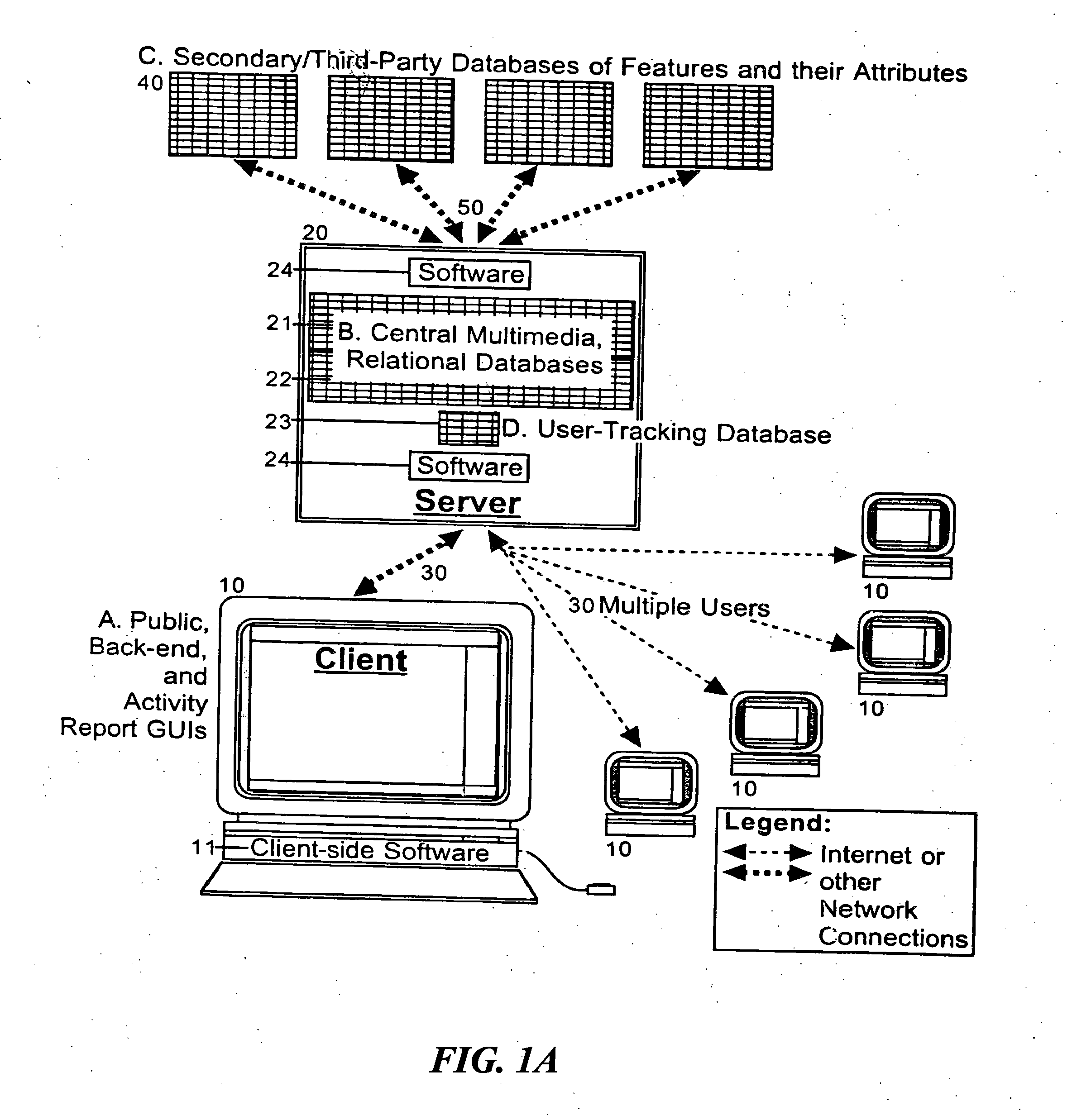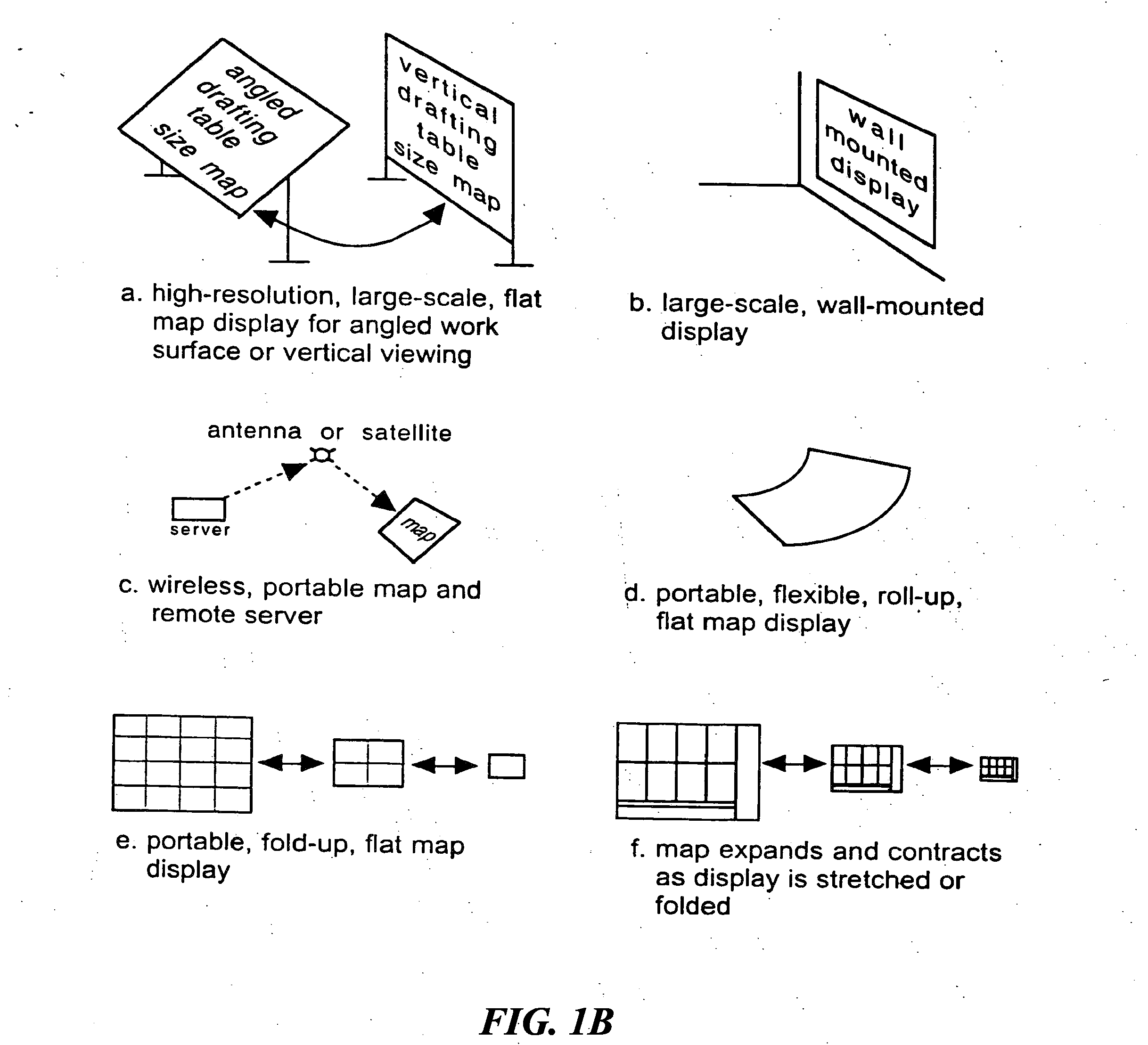Graphic-information flow method and system for visually analyzing patterns and relationships
a graphic information and flow method technology, applied in the field of computer controlled graphic display systems, can solve the problems of cumbersome and restrictive, not yet enabled viewers to call out sets of graphic data, and the viewer must struggle to see only wha
- Summary
- Abstract
- Description
- Claims
- Application Information
AI Technical Summary
Benefits of technology
Problems solved by technology
Method used
Image
Examples
examples
[0114]An exemplar GUI (Graphical User-Interface) layout and its components shown in FIG. 6A is designed to organize information from an extensive, complex data set. The special control apparatus maximize ease in retrieving subsets from the database. The navigation to the desired map can be accomplished via an optional index, 6901-6904, on the left by clicking on bar segments and list items. Retrieval Bar, 6101, for switching categories of mapsets and Retrieval Bar, 6102, for switching subcategories of mapsets call forth clickable lists of mapsets, 6103, within the selected category and subcategory. The example shows a list organized in alphabetical order. Retrieval Bar, 6104, is used for calling forth additional list information. The hilited segment designates the portion of the list that is displayed; clicking another letter calls up the portion of the list starting with that letter. Clicking on a map name in the list brings its base map into the Map Area. Orientation and navigatio...
PUM
 Login to View More
Login to View More Abstract
Description
Claims
Application Information
 Login to View More
Login to View More - R&D
- Intellectual Property
- Life Sciences
- Materials
- Tech Scout
- Unparalleled Data Quality
- Higher Quality Content
- 60% Fewer Hallucinations
Browse by: Latest US Patents, China's latest patents, Technical Efficacy Thesaurus, Application Domain, Technology Topic, Popular Technical Reports.
© 2025 PatSnap. All rights reserved.Legal|Privacy policy|Modern Slavery Act Transparency Statement|Sitemap|About US| Contact US: help@patsnap.com



